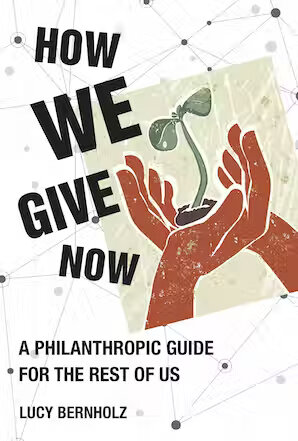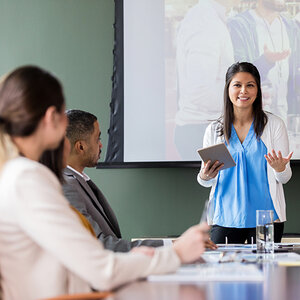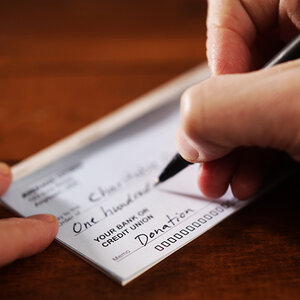How We Give Now: A Philanthropic Guide for the Rest of Us
Every day, we give. In many, many ways. Though we might not realize it, we are constantly giving our time, our money, and, as Lucy Bernholz, senior research scholar at Stanford University's Center on Philanthropy and Civil Society (PACS), reminds us, our personal data. In How We Give Now: A Philanthropic Guide for the Rest of Us, Bernholz asks us — the non-wealthy givers — to expand our definition of philanthropy to include the numerous ways in which we are already participating in society, and to do so with more consciousness around how we give.
In writing this book, Bernholz engaged individuals and groups across the nation in reflective discussions about all the ways in which they direct their private resources for public benefit, beyond what is traditionally captured in official giving data. The stories people shared — in big cities and rural towns — are brought to life in the book and highlight the array of giving options we have.
Over the last few decades, income inequality in the United States has been worsening. As the wealthy get wealthier, their contributions are fueling a steady rise in charitable contributions, but fewer and fewer families overall are engaging in philanthropy and volunteering. To help us better understand why, Bernholz presents a broader "givingscape" — one that includes all the ways we — "the rest of us" — are asked to give in today's fast-paced digital environment.
In our day-to-day lives, we give in all kinds of ways we might not think of as "giving," from clicking "yes" to give a dollar when checking out at the grocery store (money) or donating to a stranger's GoFundMe campaign (money), to assisting with grocery deliveries to the elderly amid the ongoing pandemic (time) or canvassing for candidates (time), to scrolling through social media (data) or filling out a questionnaire at the doctor's office (data). All of these actions are part of our efforts to make the world a better place, but they don't necessarily carry equal impact.
Our time and money are limited. As Bernholz writes, "we can use it once, and that's it." Because of this, we are used to making choices about how we spend our time and where we put our money more carefully. With our data, however, our possibilities are more widespread and also less known. We generate digital data via our phones, social media, and search engines that are claimed by the companies whose products we're using. Rarely do we read the fine print before clicking "I agree" on a form or a website to hand over power to companies to do what they want with our data. While there is little harm in doing so, Bernholz highlights how these actions primarily serve the interests of corporations and further commodify our actions.
What if we were instead to imagine a new relationship with our data that advanced technologies, laws, and social practices that serve communities, rather than enrich companies? Bernholz, who directs the Digital Civil Society Lab at Stanford PACS and is the author of Creating Philanthropic Capital Markets: The Deliberate Evolution (2004), has some ideas.
One example of a digital donation that we might not always have thought of as "giving" is information sharing. Bernholz walks us through the example of iNaturalist, an app that crowdsources information about plants by allowing individuals to upload photos and other users to weigh in about what the plant is. This might not sound at all like "philanthropy," but Bernholz details how this kind of data sharing actually makes a big impact: The data in iNaturalist not only help individual users with their own interests and projects but have also contributed to scientific breakthroughs. On the flip side, users are also opting in to sharing personal information such as location as those photos are uploaded. Giving data is new for all of us, and as we move through the process of crafting institutions, rules, and practices for this type of giving, Bernholz reminds us to be conscious of both the positive impact of our choices and the data we might want to protect.
The section on "retail therapy" illustrates an example of a commodified action that gets branded as giving: shopping. Say a pair of sneakers are marketed as contributing to a cause. Rarely do we know exactly how much of our purchase is being directed toward the cause; nonetheless it's tempting buy something and believe we are doing good at the same time. Bernholz explains that this type of cause marketing serves to make the consumer feel generous, while companies are incentivized to limit the amount that is gifted to charity. There is little evidence that this kind of giving is worth it or makes a real impact — so Bernholz urges readers be honest with themselves and about their "shopping decisions." A more impactful alternative, she suggests, would be to make a direct financial donation to a nonprofit or to volunteer time working for the cause the purchase supposedly supports. As Bernholz puts it, "then you'll know what you are giving, how much, to whom, and for what."
There is a difference, however, in the kind of giving detailed above and giving to local and/or minority-owned businesses or business that support marginalized communities. These dollars center the community itself — an ethos which is central to Bernholz's entire guide. The events of 2020 revealed how much we rely on one another and how desperately we need equitable public services. It's our responsibility, as neighbors and members of the community, to be conscious of all the ways in which we give and to center the collective while doing so.
The book leaves the reader with practical considerations for how to move forward. After all, it's framed as a guide. Overall, Bernholz does a great job exploring philanthropy's changing landscape, how the systems of giving work, and who benefits from them. By providing this reframing, she positions readers well to think about how our everyday actions can help us move toward collective prosperity — and not just monetarily. How We Give Now offers anyone interested in a fuller understanding of how we participate in society, whether it be with our time, money, or data, a lot to consider — about what our shared futures can look like, if we were to pause to think more deeply about how we do things.
Sarina Dayal is a research specialist at Candid, where they help derive insights about the social sector.








